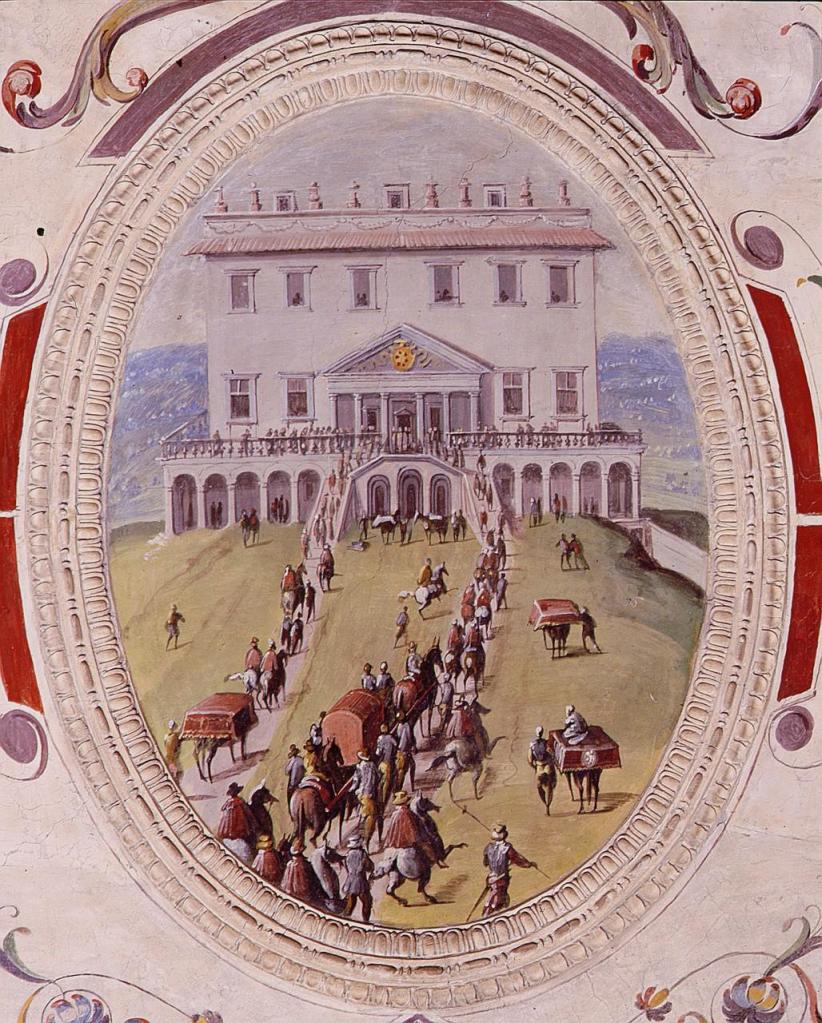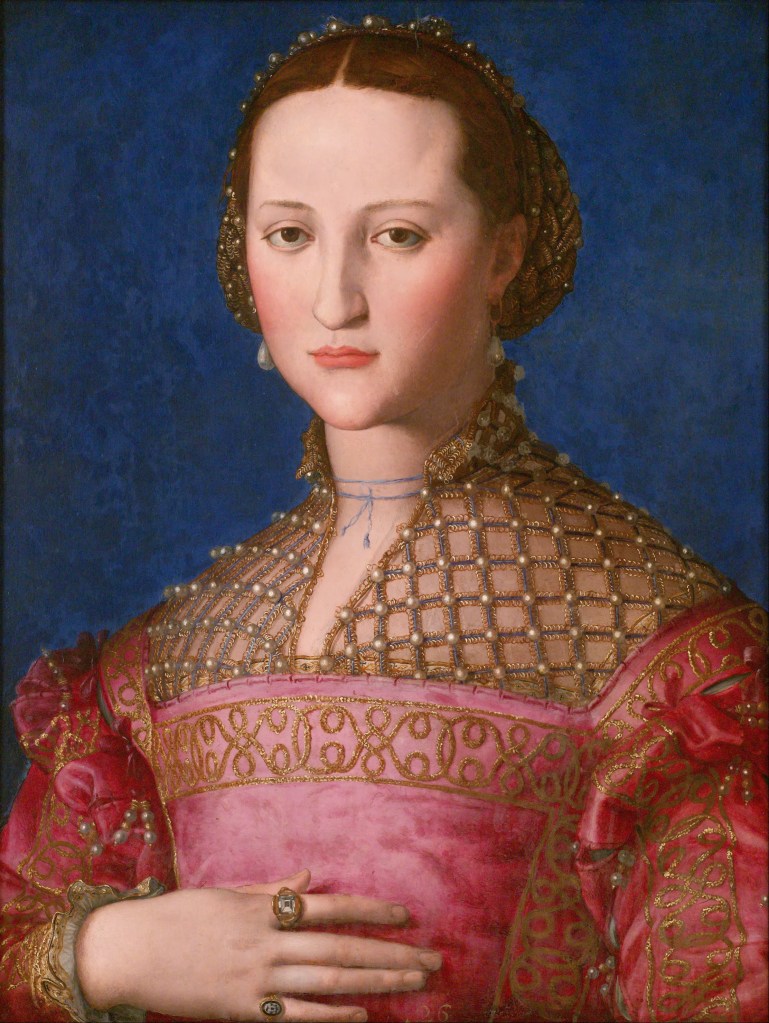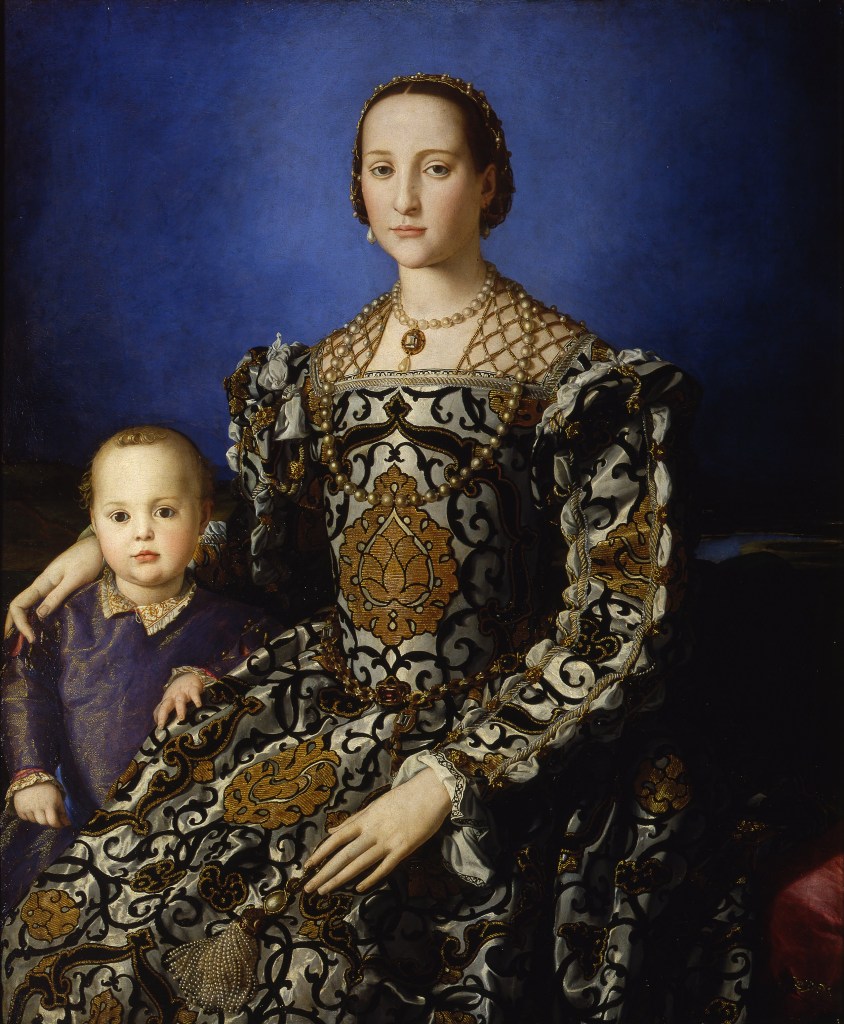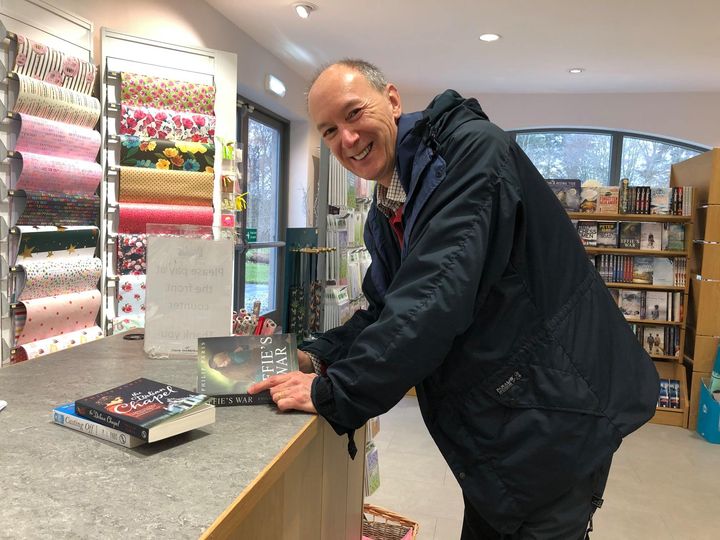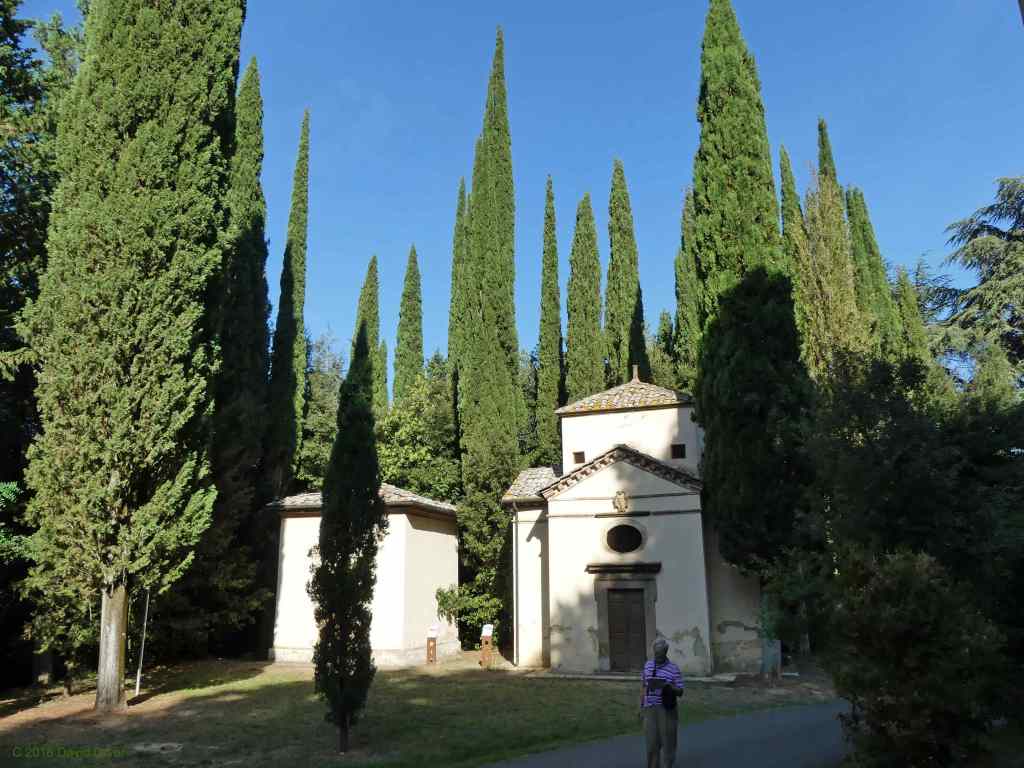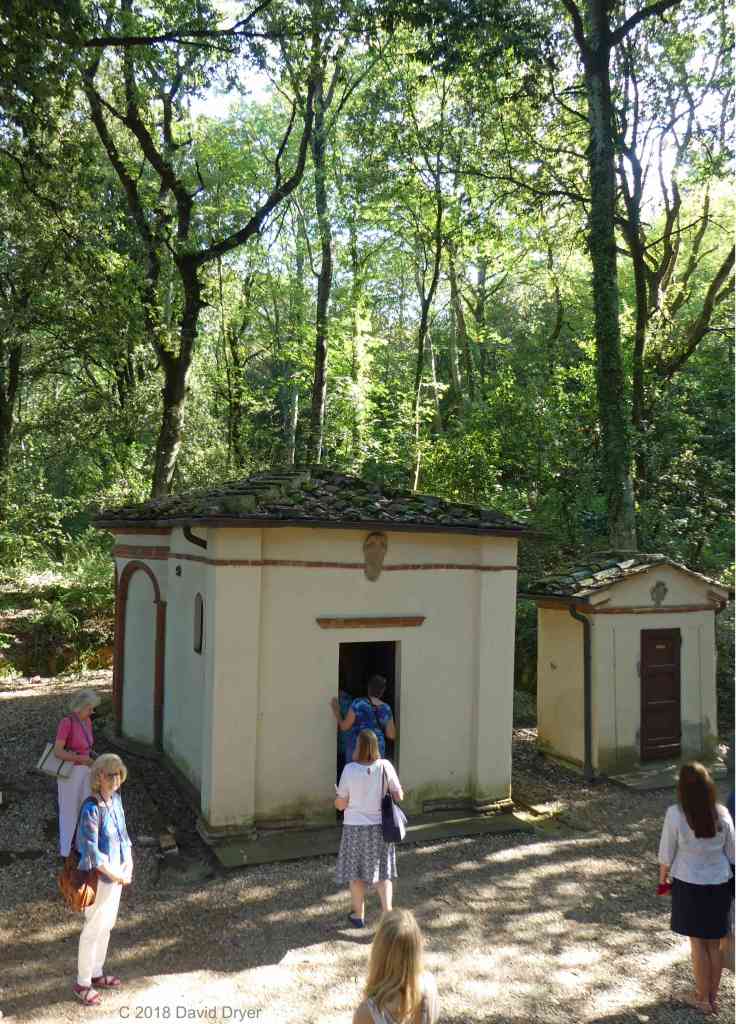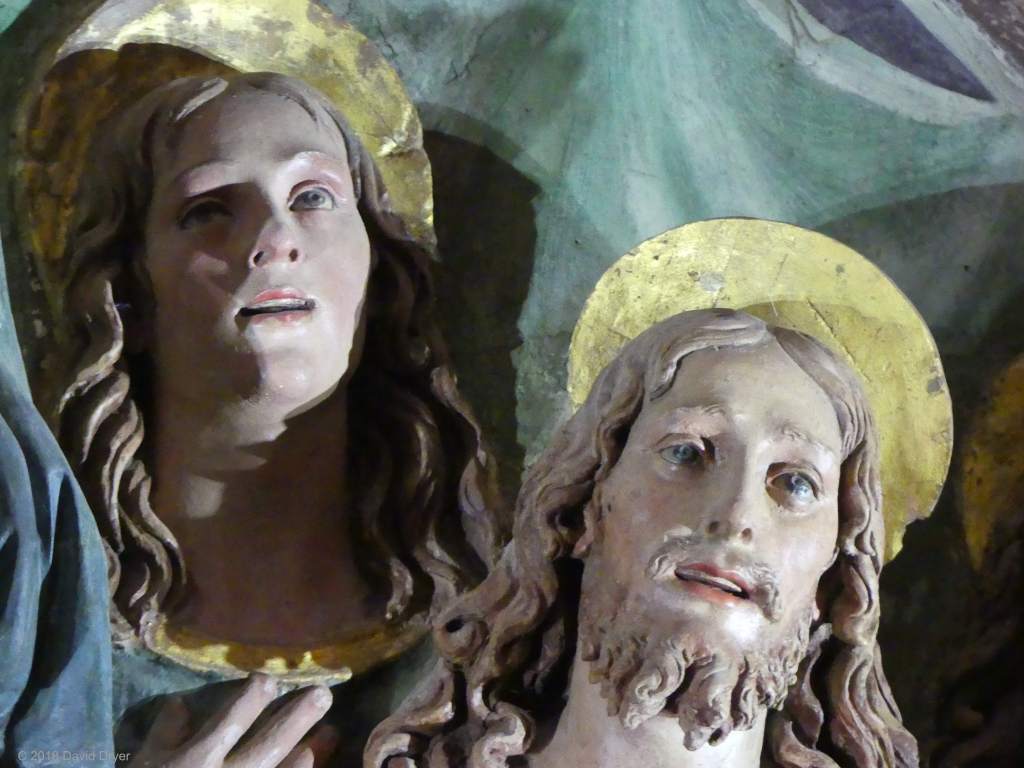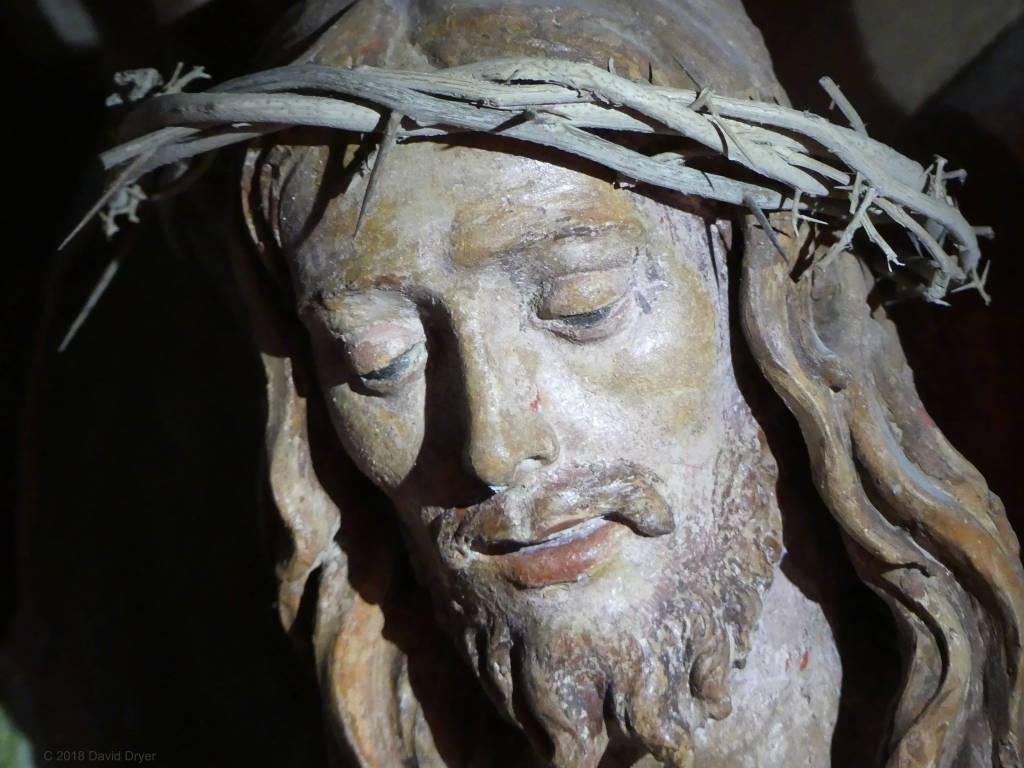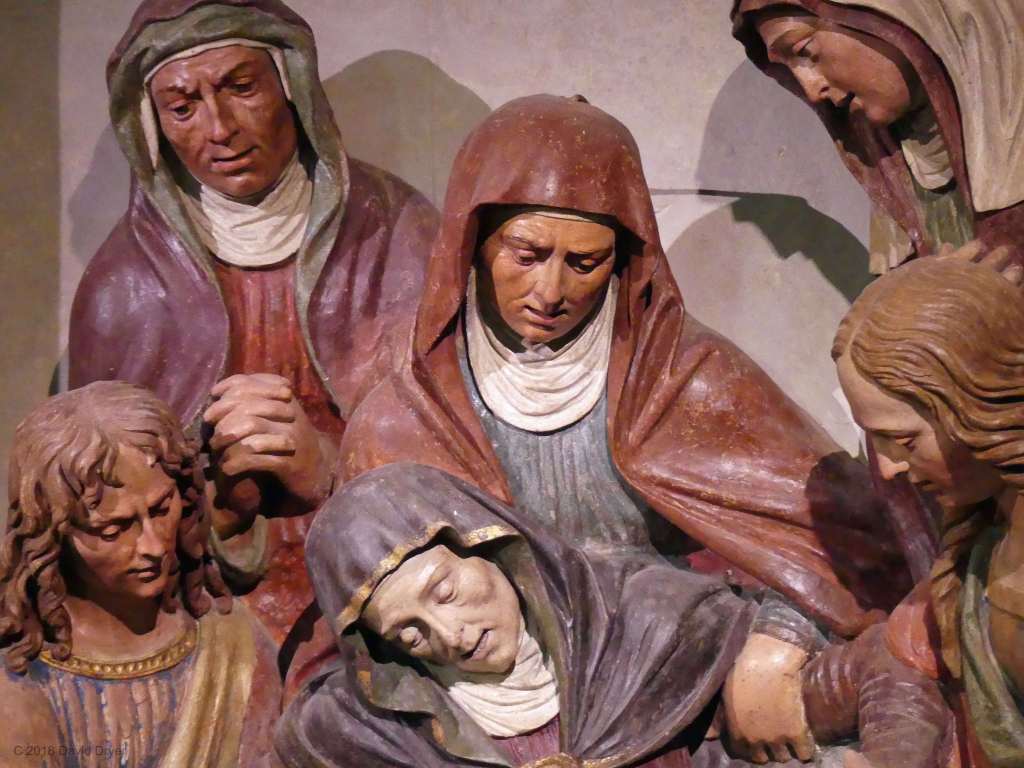The imagery of women in Bronzino’s paintings 1540-1560
2. The fanciulle of the Medici household: Bia and Maria
Bia de’ Medici was the illegitimate daughter of Cosimo I as she was born from a relationship that Cosimo had prior to his marriage to Eleonora of Toledo in 1539. Bia was allegedly the fruit of Cosimo’s liaison with a Florentine “gentildonna”, as this appears in the correspondence of Simone di Filippo d’Albizzo, an agent of the Duke of Urbino at the Medici court. Sadly, Bia died in infancy after a short illness in 1542, and she was buried in the church of San Lorenzo, the parish church of the Medici and the place where previous generations of the family were laid to rest.
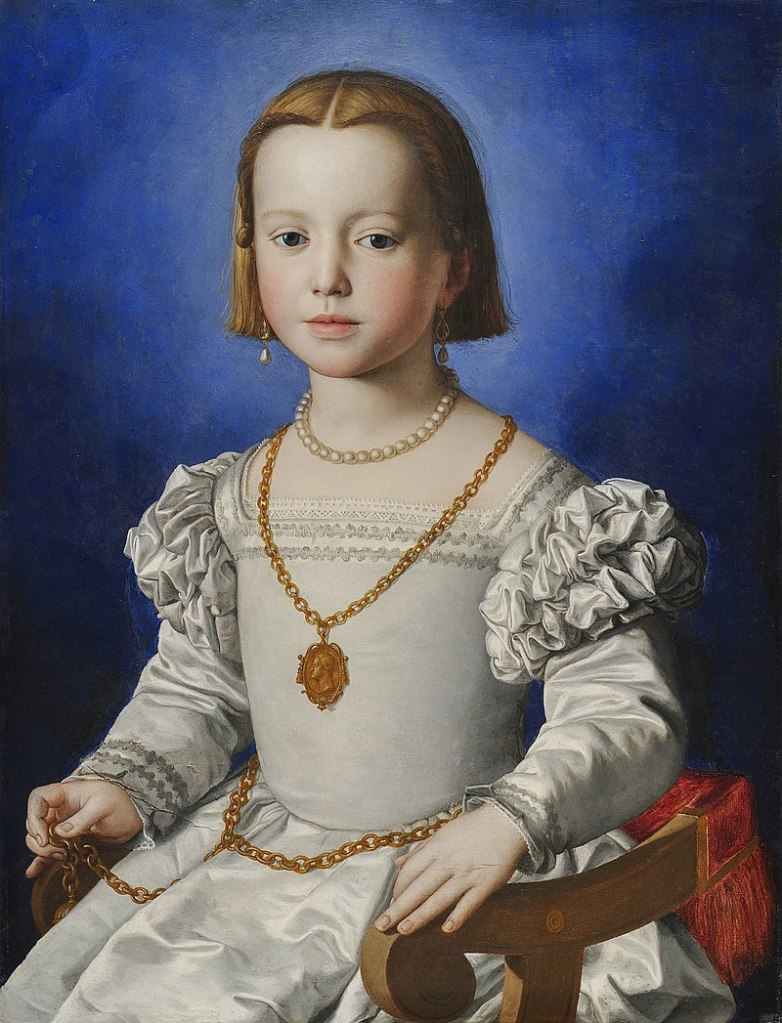
Giorgio Vasari recalled that Bronzino had painted a portrait of Bia, and inventories of the Medici household from 1553 to 1568 list a portrait of Cosimo’s first daughter. (fig. 1) Some scholars hypothesized that the cold colours of the palette indicated that Bronzino had painted this image after Bia’s death, and likely around the early 1540s, as the style of the dress reminds the viewer of another portrait painted by Bronzino, that of Lucrezia Panciatichi. The white colour of her dress is a clear allusion to the girl’s full name: Bianca. It was suggested that Bia’s portrait might have been depicted after her death and that Bronzino copied her features from her death mask. We will probably never be certain of this, but contrary to the portraits of the other members of the family, Bia’s portrait is the lasting and poignant memory of Cosimo’s first child. When we observe this portrait, we have the perception that the boundary between the state and family portrait is somewhat tenuous. Like in Eleonora’s portrait, Bia’s character and emotions appear concealed by her aristocratic poise. Bia was deeply loved by Cosimo and his wife Eleonora, who cared for her as if she were her own child, and her portrait is a testimony of her position within the family. The girl enjoyed the same treatment as her siblings, and the jewels that she wears in the painting underscore her privileged position despite being born out of wedlock. The background of ultramarine blue made with expensive lapis lazuli, similarly to Eleonora’s portrait, complement the elegant dress and exquisite jewellery.
Cosimo I and Eleonora of Toledo commissioned their children’s portraits for private display, but also to be sent abroad as gifts. Documents show that Cosimo and Eleonora gave explicit instructions to Bronzino regarding the attire that Eleonora and the children should wear in their portraits. On one such occasion for example, Eleonora advised that her son Francesco had to be depicted in a similar suit to the one that he wore during a visit to Genoa to meet Felipe II of Spain. Francesco’s portrait was meant as a gift to Cardinal Antoine Perrenot de Granvelle, who was an advisor to Charles V and later to his natural daughter, Margaret of Parma, Governor of the Netherlands. Bia, like Eleonora, wears expensive jewellery: a pearl necklace, hoop earrings with teardrop diamonds and pearls, and a belt of gold chain ending in a fretwork tassel with pomander. There were doubts over the identity of the sitter of this painting, although it is now generally accepted that the girl in the portrait is indeed Bia. The gold chain necklace with a pendant showing the profile image of a young, beardless Cosimo appears to be a reminder of his juvenile paternity and the explicit recognition of Bia as his daughter. While portraits could represent the prelude of an alliance, help to expedite a marriage arrangement, or guarantee a future ecclesiastical career, Bronzino’s painting of Bia remains as the testimony of a much-loved daughter and stepdaughter.
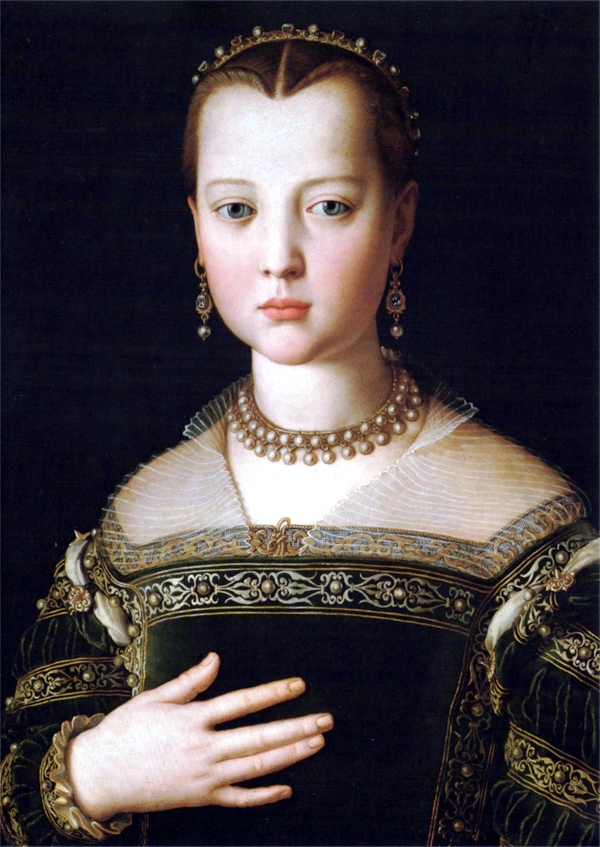
Maria de’ Medici was the first daughter of Cosimo I and his wife Eleonora, and she was said to be beautiful as well as very bright. She impressed her contemporaries for being bilingual, as she could speak both Italian and Spanish fluently, and was able to read Latin by the age of eight. In 1545, Caterina de’ Medici, Queen of France, requested a portrait of the two princes, Cosimo’s sons Francesco and Giovanni, and of the young princess, Maria. Giorgio Vasari talks about Duchess Eleonora’s commission for these portraits from Bronzino, emphasizing young Maria’s beauty. (fig. 2) Correspondence shows that in the same year Cosimo summoned Bronzino to join the court at Pietrasanta to execute the portraits of Maria and his other two children: Francesco and Isabella. Portraits of Cosimo’s children were also ordered from Bronzino during Cosimo’s sojourn in Volterra, to be carried out on their return to Florence.
In this painting now in the Uffizi gallery, Maria is represented with an elaborate dress of velvet with a rich embroidery of pearls. On her head Maria wears a “grillanda” a head-dress made of pearls and precious stones held in place by a gold thread. This elaborate and precious ornament was complemented by similarly elaborate teardrop-earrings, and a double-row pearl necklace. This image of Maria is recorded in an inventory of 1553 and shows her more as a miniature version of her parents, than as a child. Her elaborate attire and jewellery highlights Maria’s rank, family wealth and beauty, the impeccable image of the ruler’s daughter. As was the case for the portraits of her mother Eleonora and of her siblings, Maria’s image was an important component in Cosimo’s strategy for the consolidation of his power and the strengthening of important dynastic alliances. Unfortunately, Maria died only six years later, in 1557, before her marriage to Alfonso d’Este, the son of the Duke of Ferrara Ercole II, took place. Alfonso went on to marry Maria’s sister Lucrezia, who died shortly afterwards of tuberculosis, although rumours arose that she was poisoned on the orders of her husband. However, in these images the descriptive ability of Bronzino’s brush goes beyond the mere representation of his aristocratic sitters and their opulent outfits to render Bia’s gentle and loveable little face and Maria’s melancholic gaze in the most exquisite manner.
Further Reading:
Falciani, Carlo and Natali, Antonio, Bronzino: artist and poet at the court of the Medici, Florence: Mandragora & Fondazione Palazzo Strozzi, 2010.
I gioielli dei Medici dal vero e in ritratto, ed. by M. Sframeli. Florence: Sillabe, 2003.
Langdon, Gabrielle, Medici Women: Portraits of Power, Love and Betrayal from the Court of Duke Cosimo I, Toronto, University of Toronto Press, 2006.
Vasari, Giorgio, Le vite dei più eccellenti pittori, scultori e architetti (1568 ed.), Florence: Giunti, 2002.
